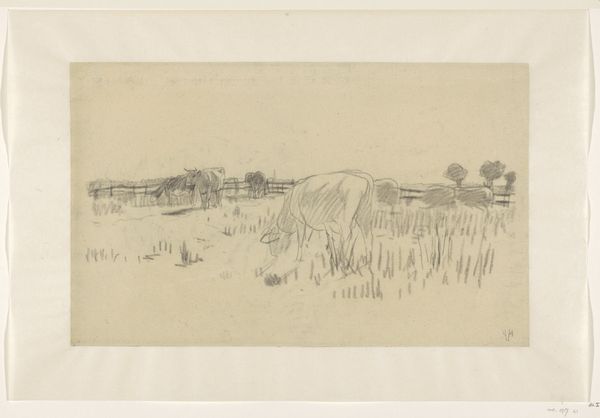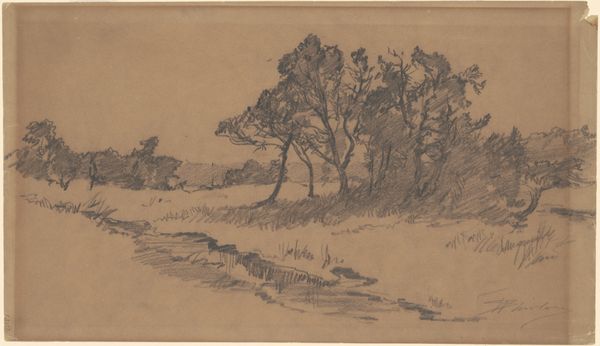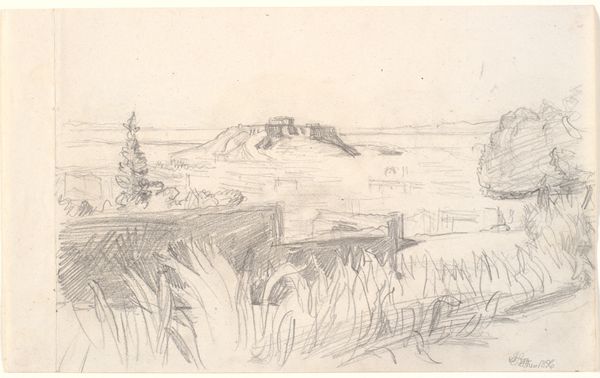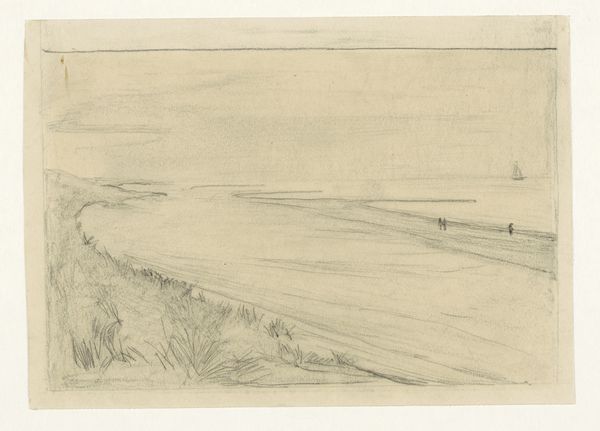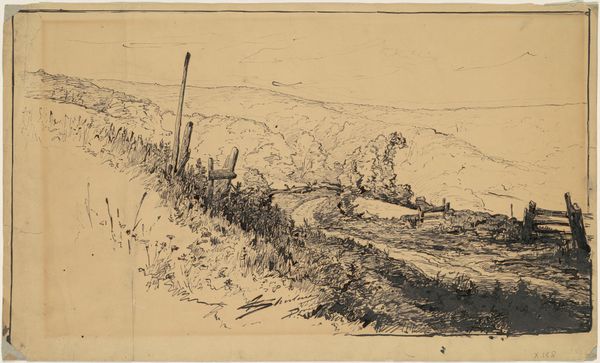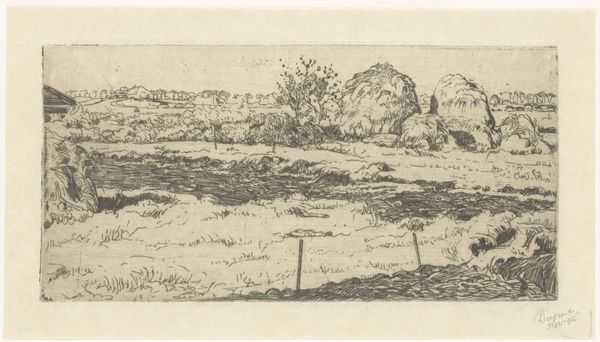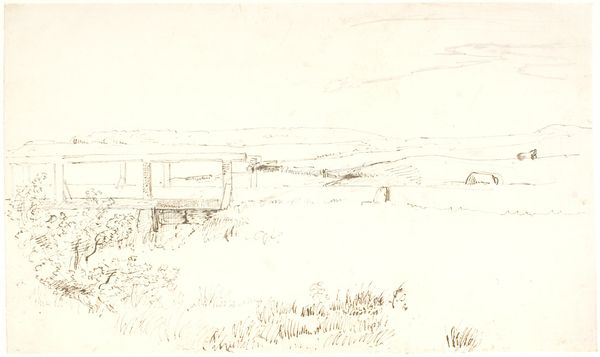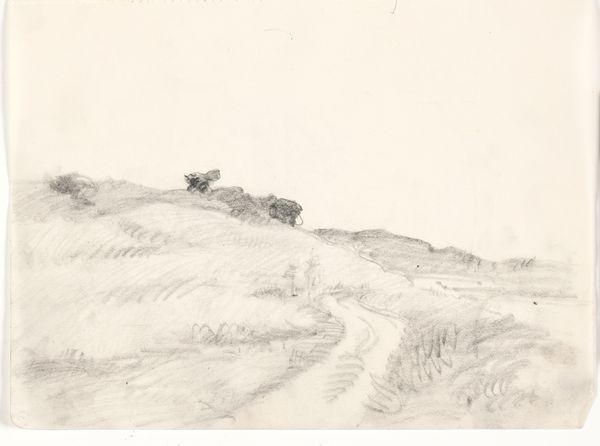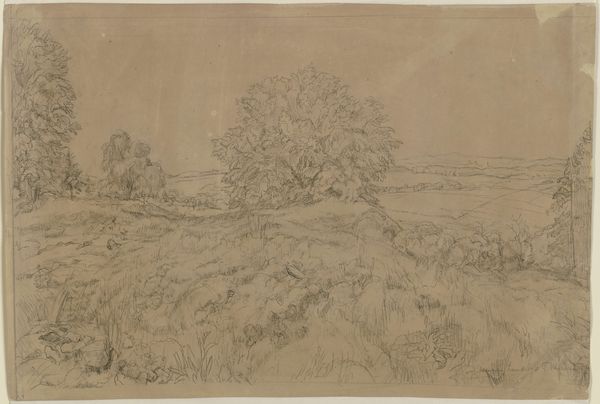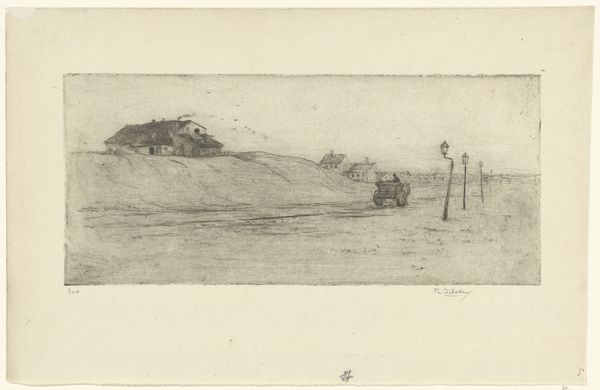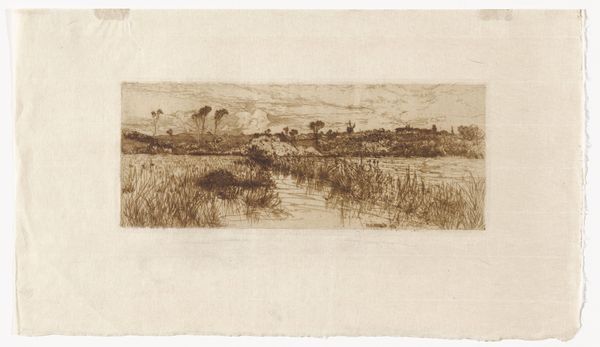
View of the Field behind Saint Paul’s Asylum in Saint-Rémy-de-Provence 1889
0:00
0:00
drawing, pencil
#
drawing
#
landscape
#
pencil
#
post-impressionism
#
realism
Dimensions: 9 1/8 x 12 in. (23.2 x 30.5 cm)18 3/4 × 21 3/4 × 13/16 in. (47.63 × 55.25 × 2.06 cm) (outer frame)
Copyright: Public Domain
Editor: This is Vincent van Gogh’s "View of the Field behind Saint Paul’s Asylum in Saint-Rémy-de-Provence" from 1889. It's a pencil drawing on paper. The composition is simple, yet there’s a rawness to it, a feeling of confinement, perhaps even desperation. What strikes you about it? Curator: I'm immediately drawn to the materiality. This isn't about some transcendent aesthetic ideal. It's pencil on paper. Consider the sheer volume of drawings Van Gogh produced, driven by necessity. These materials weren't precious commodities; they were tools, documenting labor. Note the visible pressure of the pencil. How might the physical act of drawing, the repetitive strokes, be a form of therapy, a means of processing the experience of being in the asylum? Editor: That's an interesting perspective. I was focusing on the subject matter – the field, the asylum wall – as symbols of his isolation. Curator: But the wall isn't just a symbolic barrier; it’s constructed, built with specific materials, and maintained by human labor. It also determined what Van Gogh could draw and see. How does that alter our understanding of the landscape? We tend to ignore the production process inherent in art; this view forces us to confront those means. Editor: So, you are suggesting we look beyond the emotional narrative to the concrete reality of the artmaking? Curator: Exactly. What did it *cost* Van Gogh in terms of physical labor and mental energy to render this field? And what does the mass production of paper during that time tell us about Van Gogh’s work? The ease of accessibility changed the game, compared to a medieval painting made using scarce pigments! Editor: I hadn't considered the accessibility of materials as influencing the artistic output. I am understanding that thinking about art as a product changes how we appreciate even Van Gogh! Curator: Yes! Approaching art in that light gives one an appreciation of art and its process.
Comments
minneapolisinstituteofart about 2 years ago
⋮
Suffering from increasingly acute attacks of mental illness, Vincent van Gogh voluntarily entered an asylum in the spring of 1889, just over a year before his suicide. The hospital of Saint Paul’s was in a 12th-century monastery in the countryside near Arles, in southern France. This view of wheat fields was likely the one van Gogh saw from his small cell in the asylum. He focused on the sparseness of the environment and texture of the wheat grass. Using the field’s walled enclosure and distant horizon, he convincingly structured the space in perspective and simultaneously evoked the vastness and loneliness of the rural landscape.
Join the conversation
Join millions of artists and users on Artera today and experience the ultimate creative platform.
